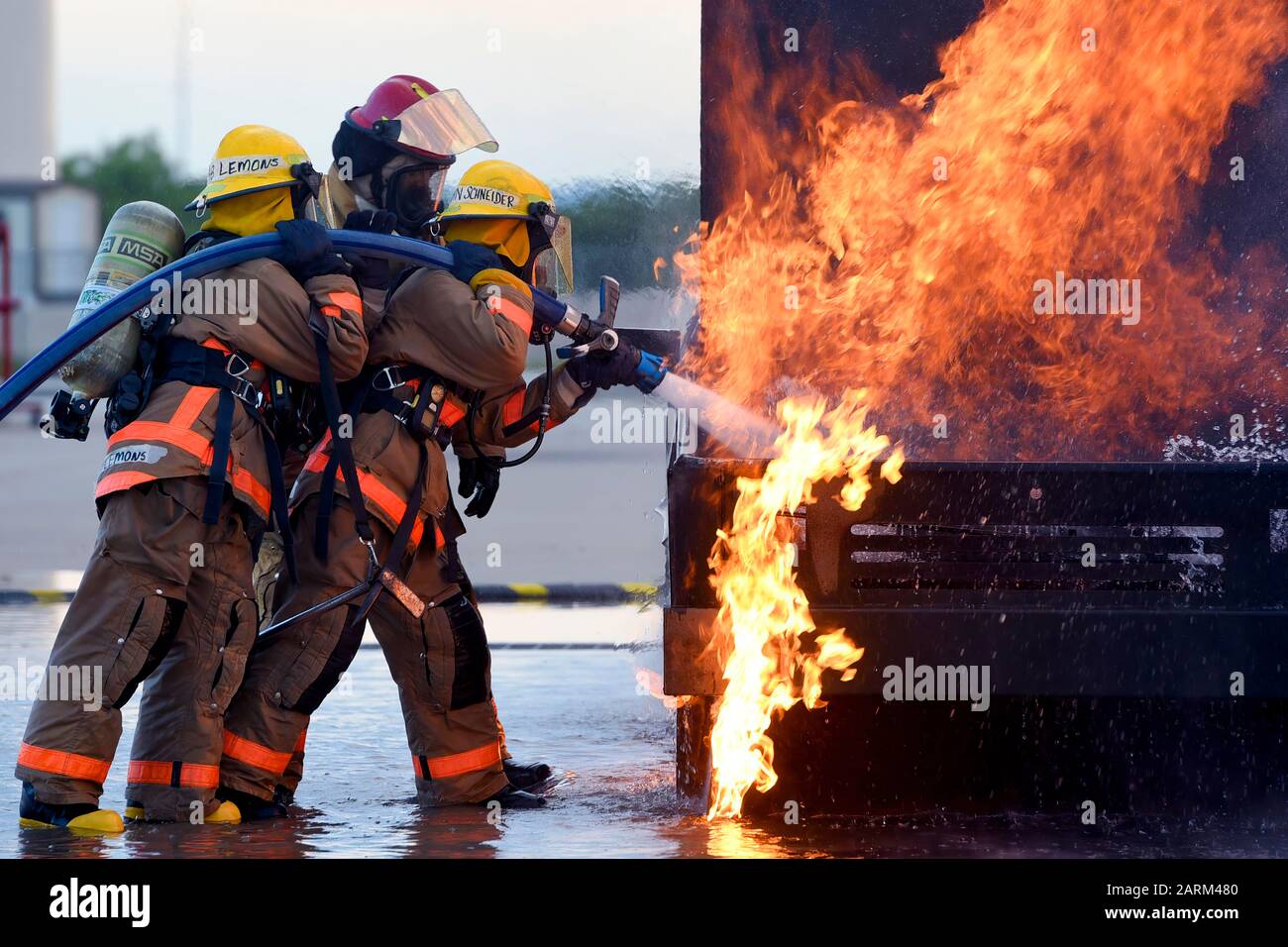U.S. Air Force Airman Kristina Schneinder, 312th Training Squadron student, leads Airman Emalie Lemons, 312th TRS student, in a textbook style approach to a mock vehicle fire outside the Louis F. Garland Department of Defense Fire Academy on Goodfellow Air Force Base, Texas, July 11, 2019. Schneinder and Lemons were trained in the classroom how to approach a live fire and what angle to spray the water hose for hood and undercarriage fires before their hands on experience. (U.S. Air Force Photo by Airman 1st Class Abbey Rieves/Released)

Image details
Contributor:
American Photo Archive / Alamy Stock PhotoImage ID:
2ARM480File size:
81 MB (2.8 MB Compressed download)Releases:
Model - no | Property - noDo I need a release?Dimensions:
6516 x 4344 px | 55.2 x 36.8 cm | 21.7 x 14.5 inches | 300dpiDate taken:
11 July 2019Location:
USAMore information:
This image is a public domain image, which means either that copyright has expired in the image or the copyright holder has waived their copyright. Alamy charges you a fee for access to the high resolution copy of the image.
This image could have imperfections as it’s either historical or reportage.
Firefighting is the act of attempting to prevent the spread of and extinguish significant unwanted fires in buildings, vehicles, woodlands, etc. A firefighter suppresses fires to protect lives, property and the environment.[1] Firefighters typically undergo a high degree of technical training.[1][2] This involves structural firefighting and wildland firefighting. Specialized training includes aircraft firefighting, shipboard firefighting, aerial firefighting, maritime firefighting, and proximity firefighting. One of the major hazards associated with firefighting operations is the toxic environment created by combustible materials. The four major risks are smoke, oxygen deficiency, elevated temperatures, and poisonous atmospheres.[3] Additional hazards include falls and structural collapse that can exacerbate the problems encountered in a toxic environment. To combat some of these risks, firefighters carry self-contained breathing equipment. The first step in a firefighting operation is reconnaissance to search for the origin of the fire and to identify the specific risks. Fires can be extinguished by water, fuel or oxidant removal, or chemical flame inhibition.